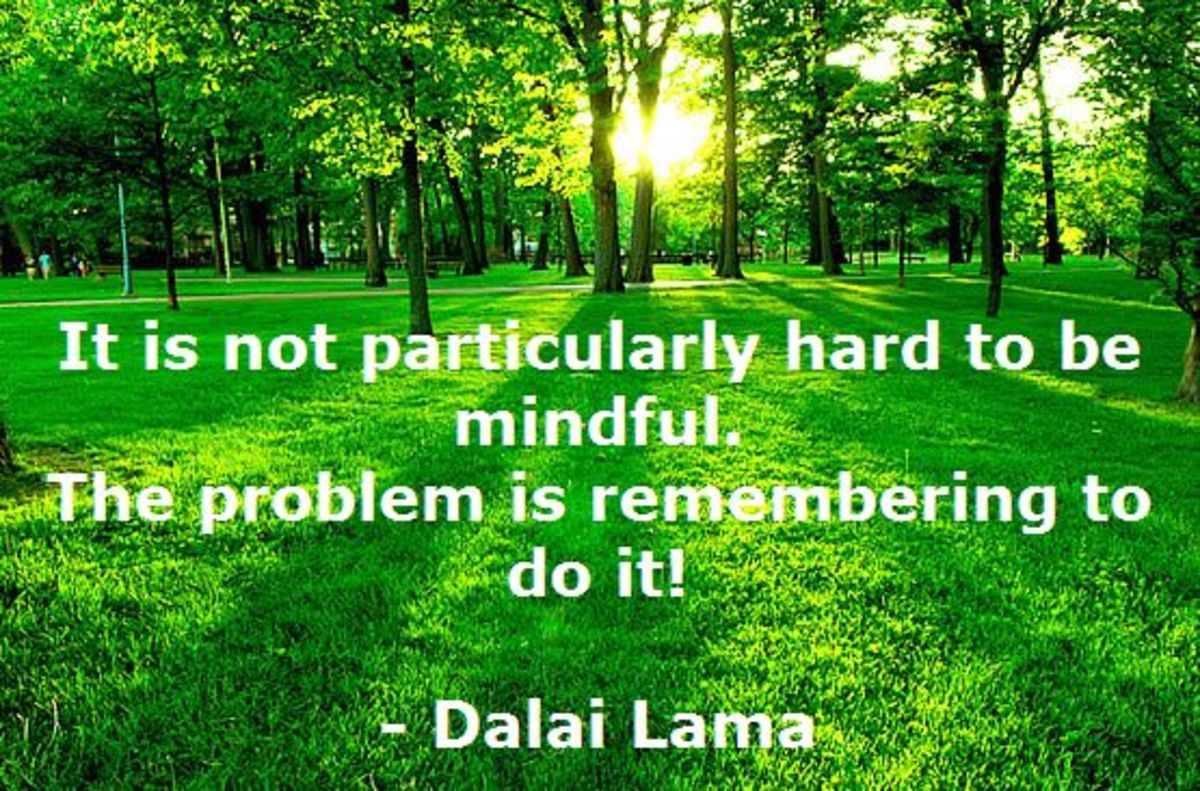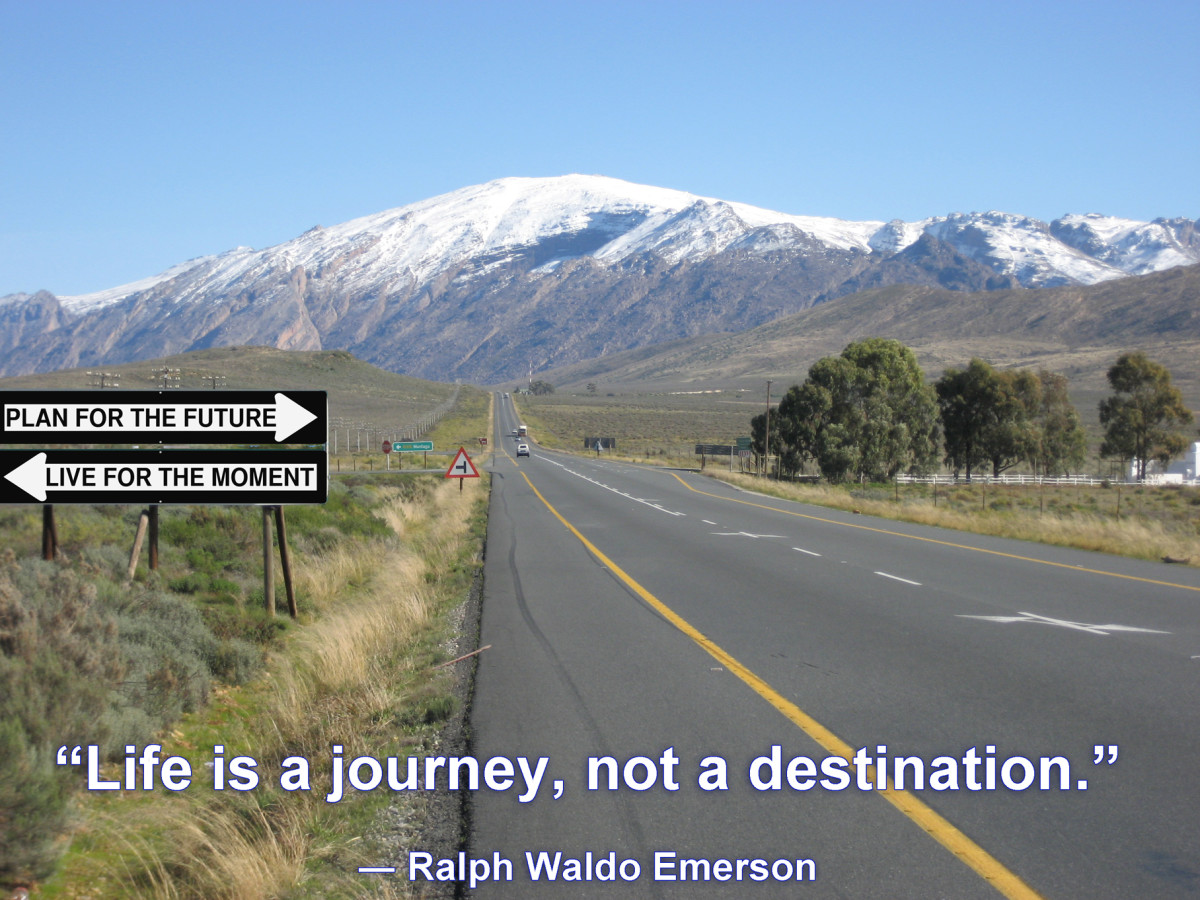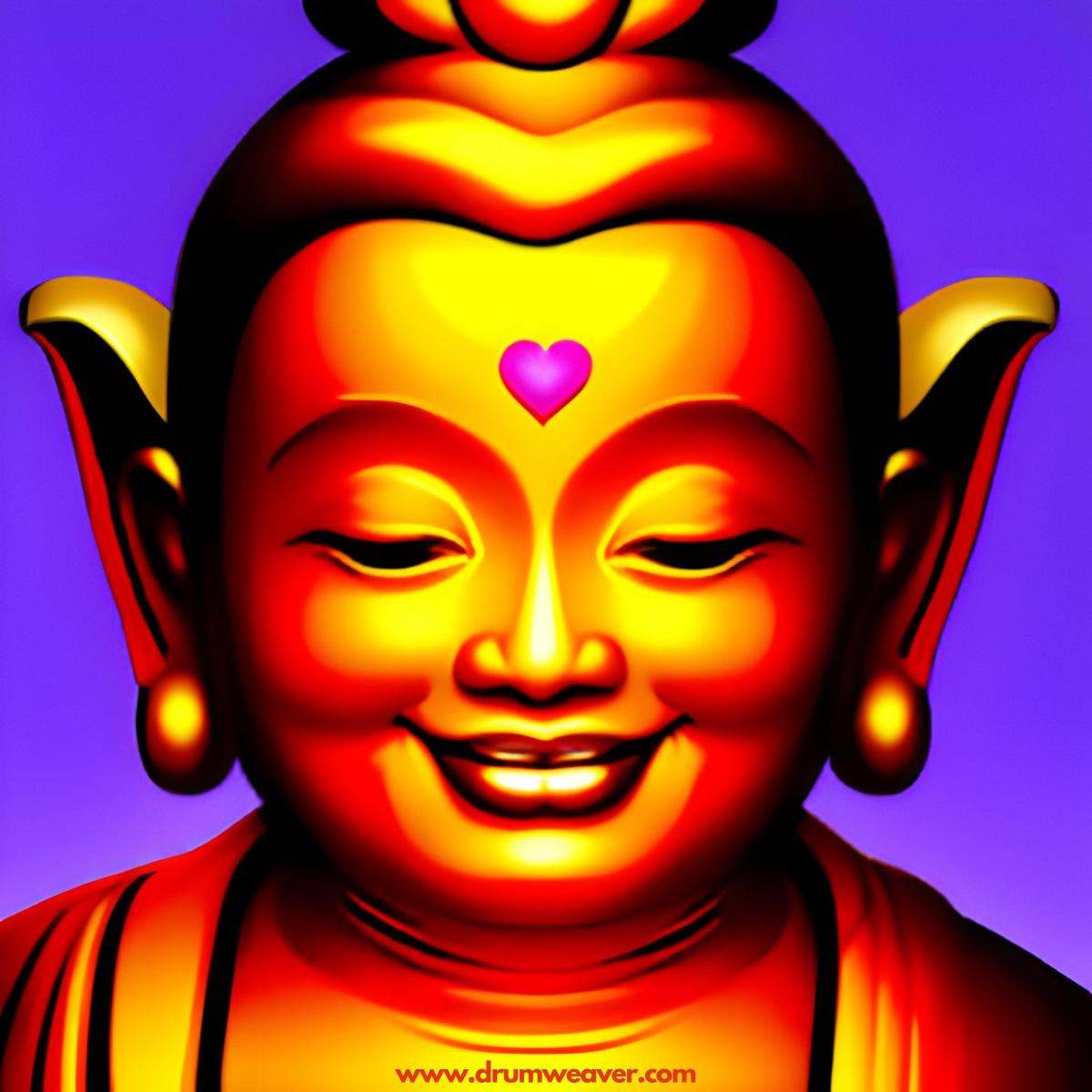Living in The Here and Now: The Practice of Mindfulness
We born with the ability to be mindful. Just watch how an infant sucks his milk from the bottle or from his mother's breast. He is putting in all his energy and attention to the sucking without the slightest distraction. However, as we grow, the more we are distracted at meals time - by the television for instance.
We may not even know what we are eating! We let our mind wander away from what our body is doing, and as a result, there is a split between mind and body. This can show up especially in habitual activities such as washing our face, cleaning our teeth, eating our meals, and so on. Such a dichotomy of mind and body can have a negative impact on what we are trying to accomplish.
If we let our mind drift into the past or into the future instead of anchoring it in the present, then our mind will control us rather than we control our mind. The secret of a happy and fulfilled life is to do what needs to be done here and now. There is but one moment of time over which we have the greatest conscious control and that is the present.
Mindfulness is a clear awareness of what is happening each moment. It brings our full attention to each moment. most of our time we live like an automatic pilot, half asleep and unaware of what we are doing and what is going on around us. However, it does not matter what results in the end. all that is necessary is to attend to what we are doing with full awareness and in a wholehearted way so that the very doing is in itself satisfying.
Mindfulness is observing and experiencing without reacting. It allows us to notice what is just here; to receive each experience without judgement, grasping or aversion. It allows us to perceive our senses directly without the intervention of any kind of analysis, comparison or interpretation.

Practising mindfulness gives our mind steadiness, calmness and equanimity. It is a universally applicable quality since it helps us focus on what we want to do, whether it is playing tennis or music. It keeps us from being caught up in the whirl of life's changing circumstances.
Even in moments of fear, confusion and peril, when mindfulness arises, it helps us see our situation clearly and brings us into a state of psychological balance. The mind becomes focused through gentle and gradual practice, and not through strain and struggle. If only we can let go of anxiety about the past and the future, then we can relax into the present.
The most basic object for the practice of mindfulness is the breath. It is the process of focusing and steadying attention on our in and out breath. Despite distractions, we should bring the mind back to the breath again and again. We mindfully feel the air coming in and going out of our nose. We keep observing our breath until it becomes light and natural, calm and peaceful.
At any time, whether we are walking, sitting, sewing or typing, we can return to our breathing, which gives us not just the oxygen we need but also peace and tranquillity - if we know how to pay attention to it. It requires us to let go of thoughts of the past and future, of fantasies and attachments, and to bring the mind back to the actual moment of feeling, of touching the breath as it is. Concentration like this comes with practice; remember - the mind can be trained.
Stay awake in the now. Stay alive in the present
The ultimate purpose of developing mindfulness is to have the mind under our control and not the other way round. It is a case of staying focused, attentive and concentrated. Concentration means the unification of differentiated mind. Our mind is normally differentiated: it is attracted by attractive things and repelled by repulsive things. Things in themselves are neutral. It is our habit of imposing our own value judgement on them that makes them attractive or repulsive.
A mind which is concentrated is very powerful. It is like a vast volume of water gushing through a narrow tunnel to produce electricity. As Buddha Shakyamuni says, a person with a concentrated mind can see things as they actually are. This is the relevance of concentration to wisdom.
It is through wisdom that we can identify the three radical roots of moral evil, namely passion, aversion and delusion. These are the three fires referred to by Buddha Shakyamuni when he says that the world is on fire. It is only when we have identified the psychological mainsprings of all moral evils that we can eliminate them without leaving any residue. The elimination of passion, aversion and delusion is complete emancipation. Emancipation means the cessation of the three fires. It is not the extinction of anything else.
The Use of Meditation - an Exercise to Inner Happiness
Why do we have to meditate? Meditation is a dynamic, living process out of which new perspectives and new ways of understanding and appreciating our lives continually emerge. As we follow the path of meditation, we discover a process of opening and deepening, a clearing of the mind and the heart. It is like emptying a cup and refilling it with water of wisdom.
Goldstein & Kornfield point out the purposes of meditation. First, it is opening up what is closed in us. We spend so much of our precious time lost in thought, in judgement, in fantasy and in daydreaming. These prevent us from paying careful attention to the direct experience of our senses - to sight and sound, to smell and taste, to sensations of the body.
As awareness and concentration become stronger through meditation, we experience a much greater sensitivity and refinement of our sense impressions. We also begin to open up the body and mind. As we direct our awareness inward, we begin to experience in a very clear and intimate way our accumulated tensions. Instead of pushing them away or closing our eyes on them, we can soften our mind, so that it becomes more receptive and more relaxed.
When there is a pain in the body, instead of resting and pushing it away, we remain open and experience the sensation of tightness as it arises and ceases. Instead of complaining "My back hurts", we open our body up and feel the sensations of the sore back. From this, we move on to see what is actually happening: the arising and ceasing of sensations. In this way, we begin a process of untying the knots in our own system. We begin to allow for a freer flow of energy, and that is very healing.

Second, it is balancing what is reactive: liking and disliking, judging and comparing, clinging and condemning. Meditation offers salutary mindfulness. It is neither holding on nor avoiding. It is the settling back into the present moment, opening up to what is there.
When we remain non-reactive, we are able to notice what is happening in each moment. In every moment of mindfulness, whatever is its object, whether it is the breath, sensations or sounds, thoughts or emotions, it is necessary simply to note what is there. Then our mind ceases to be reactive. There is only the awareness of what is present.
Third, it is exploring what is hidden. An essential part of meditation practice is going from the level of concept to the level of direct experience. Sit for an hour and we get pain in our knees: "Ouch, my knees hurt". Yet "knee" is a concept. There is no sensation called "knee". That is not what we feel. We feel tightness, pressure, tingling. These sensations are what we experience and the come and go.
We confuse concepts of the thinking mind with the reality of direct experience. We put permanence into the names we give to things and names are solidified concepts because they remain unchanged. Identification with concepts leads to "I-making" and "my-making", the notion of "I", "me" and "mine". It is not the knee that hurts. It is "my knee" that hurts.
A clear mind empowers
If we stay on the conceptual level, we are unable to see the momentary nature of phenomena. When we come to what is truly happening we see that the experience is changing every instant. In meditation, we investigate the hidden level of direct experience, whether it is a bodily sensation, or sight or sound or smell or taste.
We begin to experience the nature and process of thoughts and emotions. We discover that everything is changing; every sensation, every thought, every feeling, every sound and every taste. They are all in a state of continual dissolution.
This understanding of dissolution dissolves our grasping and our attachment. We see that this "I" is an illusion, a concept we have created. As we lessen our attachment there is a corresponding reduction in our grasping and clinging; there is also less suffering. Allowing for the unstoppable flow of change rather than trying to hold on to it, we learn to let go.
Summary
Concentration means steadying the mind. It is like a candle flame in a windless place. If the light is steady, it can illuminate a greater area. The candle is, so to say, one-pointed in its use of energy. In our most concentrated moments, we can sense the unity of our body and mind.
This is the true meaning of wholeheartedness. A concentrated mind can generate wisdom because it can see things as they actually are. With wisdom, we can eliminate the three fires of passion, aversion and delusion and attain complete emancipation.
In affluent countries, our senses are gratified by all sorts of material stimulations which are taken for granted by most of us. We look outward to find our sources of satisfaction, but only to find our desires more and more insatiable. Therefore, the most emphatic need is to train our minds to look inwards for greater fulfilment.
The best training is through meditation. Old habits have a strong hold on us. To learn something so different from our habituate ways of life, it requires great determination and perseverance from us to empty our cup and to refill it with the wisdom of looking inward for true happiness.









